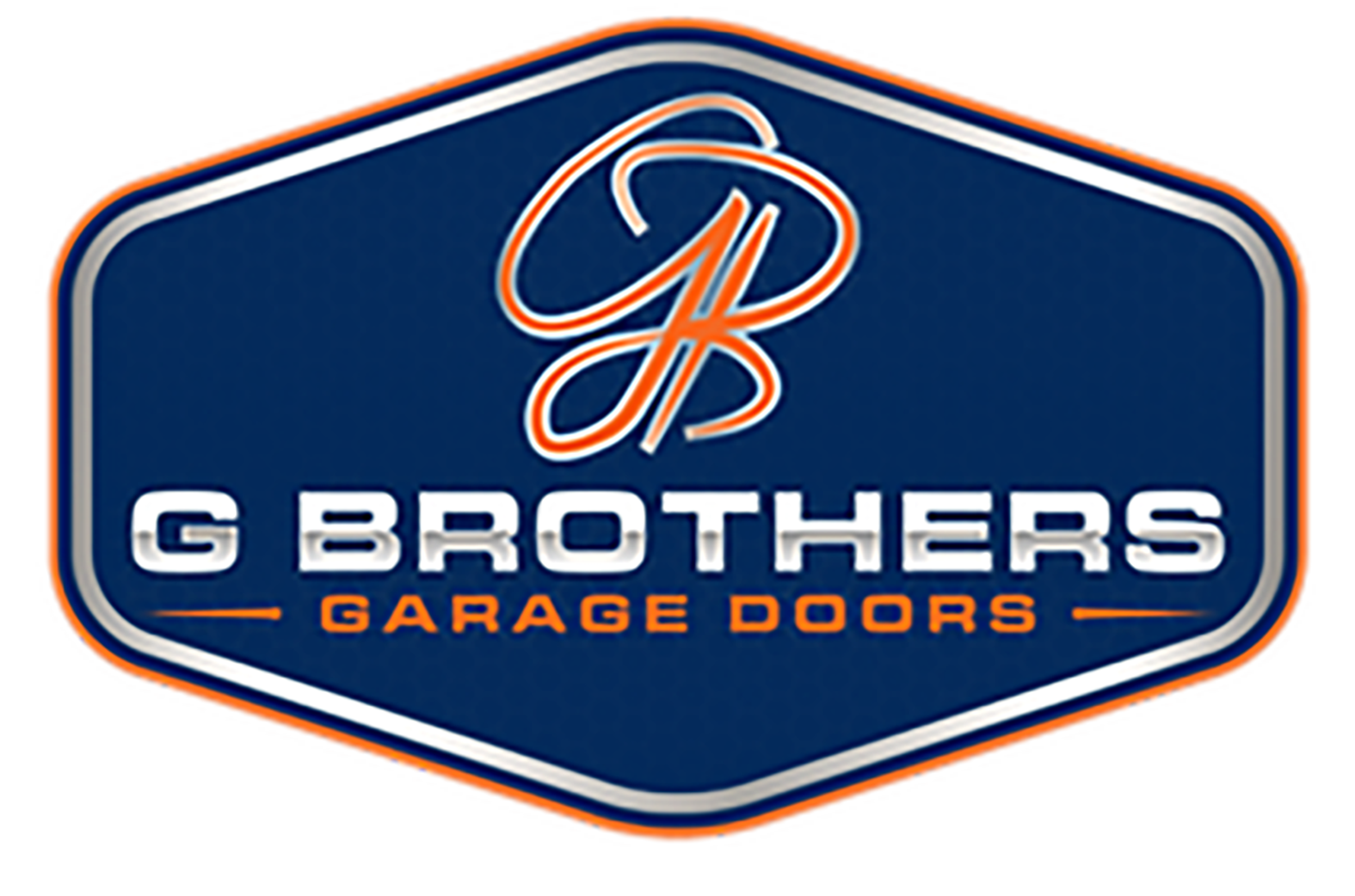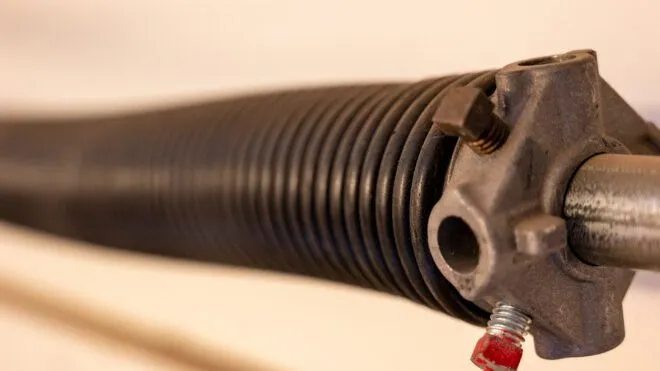Torsion and Extension Garage Door Spring: Identification and Repair
The short answer is…kind of. Not really the answer you were looking for? Well, like most home repairs, there are a lot of factors that contribute to an issue, making the solution equally as complex. Let’s unpack.
First, lets discuss the spring itself. Garage door springs carry a lot of tension. Think about it, they’re responsible for lightening the load of the door so it only makes sense that it would require a lot of potential energy. When the heavy door lowers to the ground, it simultaneously pushes down on the giant, load-bearing springs, that create tension. The tension in the garage door springs make it easier for your opener to lift the door up again when the time comes.
Although you may not hear, or even see, your spring break, you will know that your garage door spring has broken if your door refuses to lift with the opener or even by hand. With the lack of weight support that the springs provide, the door weighs about two times as much.
Now, let’s return to the original question, can you repair a garage door spring? Well, you can certainly replace your garage door springs on your own, but it can be tricky and dangerous, and the skill and tools required depend a lot on the type of springs that you have, meaning you don’t likely have all the necessary supplies (or knowledge) on hand. But no worries, if the process outlined below doesn’t seem like something that you’re ready to take on yourself, get in touch with us and we can have you fixed up in no time at all.
Have questions about what goes into replacing your garage door spring and how the process works? Read our quick outline of items you will need to know, below:
Identifying the Garage Door Spring
There are several different types of springs, and the TYPE of spring that is on your garage door will play a role in how easy (or difficult) these springs are to replace. The two types of springs are extension springs and torsion springs. You can identify what type of spring you have, by looking at your garage door. If your door system has long springs that run parallel to the tracks on either side of your garage door, those are called extension springs. Extension springs are long and thin and up in the air. On the other hand, torsion springs are fatter springs that sit on a metal rod next to the opening of the door.
If you have a very old garage door (the single piece that swings up in the air), then you may have vertical springs on both sides of the door. These are side springs, and they usually compliment another extension spring that is in the air.
Extension springs and torsion springs work in very similar ways. They use the weight of the garage door and gravity to tense up and load when the door closes (creating potential energy), which gives you a reserve of energy to move the door back up when it is being opened. The difference is that extension springs stretch to be loaded, so the energy is stored outward and wants to get back to center, while torsion springs are twisted when the door lowers, and they release energy by untwisting back in the other direction.
Torsion Garage Door Springs
So, you have determined you have torsion garage door springs, now how do you actually replace them? Torsion springs, as you might have gathered from the name alone, are typically considered the more dangerous model to work with. While it is possible to work with torsion springs, it can be very dangerous if you don’t know what you’re doing and don’t pay careful attention to the process. It is for this reason that we often suggest reaching out to us to support you in this process. Because torsion springs store a lot of energy, if you are not being incredibly cautious and directing that potential energy to the proper place, it can be unleashed on you in a way that can be quite damaging. Keeping in mind that these springs are under immense tension, will help keep you safe during this process. We certainly recommend that unless you are 100% comfortable, you call a professional —it’s just safer and easier that way.
What do you need to replace a torsion spring?
If you are going to trust yourself with changing your torsion spring, you will need a winding bar. This can be used to easily twist and untwist the springs to adjust the amount of torsion. At the end of each torsion spring there is a winding cone. This is where the winding bar fits on and can twist the whole spring. You’ll have to slowly turn the bar while pressing the spring against the door to slowly release them.
When you replace your torsion springs, you’ll want to be sure to have the door closed. There are usually only two torsion springs on a door, and if one spring is broken fully then you’re already halfway there! Once the springs are unwound and removed from the door, you’ll just have to wind up the new springs and put them in place on the door. For further instructions, we encourage you to look up a video tutorial of how to precisely screw and unscrew the springs from the door.
Just remember if you find yourself in a pickle, you can always reach out to us ! You will also want to remember that if you replace one spring, you will want to replace BOTH springs. Because garage door springs are developed to withstand a certain amount of use and if one spring breaks, it is likely that the other is close to reaching the end of its life cycle as well. Further, after the first spring breaks, the second is stuck maintaining the full weight of the door, which will also reduce its lifespan.
Need Help with Your Torsion Springs? Call Today!
Extension Garage Door Springs
Okay so you determined that you have extension garage door springs, and are wondering how to replace them. Extension springs are generally considered much easier to replace. You can completely remove and replace the springs on your door without dealing with any amount of dangerous tension. Once you open the door, the springs will lose most of their tension and should be safe to work with. When you open the door and begin working on it, you should secure it with clamps so that it doesn’t slide down on you.
Simply disconnect the springs from the brackets, pulley, and cable, and install the new spring, attaching it to the pulley and the safety cable and that’s it! Job done!
Need Help with Your Extension Springs? Call Today!
So, should I replace my springs on my own?
It depends – how confident do you feel and are you looking for a project? You should also consider what type of springs you have on your door and whether you have the tools necessary to complete such a job. If you’re good with DIY and you have a whole day to set aside, and you have extension springs—you can certainly give it a go! You might be able to handle things on your own.
That said, for many of us, replacing our own springs on a garage door is simply not a headache worth having.
Even if you are confident, there’s always the possibility that you don’t get everything in its perfect place and balanced properly which will render your garage door usable. Also, if the springs are not installed properly, it can cause a safety hazard for the use of your garage door both immediately and over time. It can cause tension on the door, causing it to break or causing the lifespan of the opener to be significantly shortened.
So while changing your own springs may be a good way to save a few bucks, it can end up costing a lot of money in the end if not done properly.
Never forget that we are always available should you ever run into a situation that requires professional support. Simply give us a call at 720.421.6489 and we will get you up and running again in no time at all!
The post Blog first appeared on G Brothers Garage Doors .

